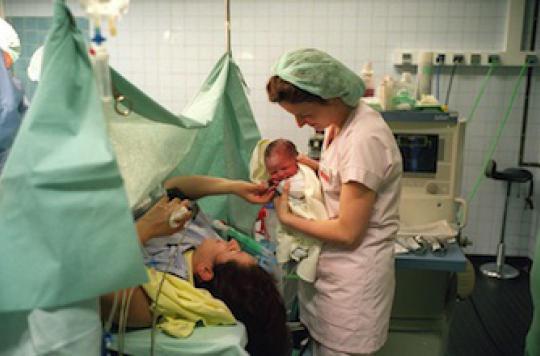In France, one in five women gives birth by caesarean section. An American study shows that it does not reduce the complications associated with twin pregnancies.

Cesarean section would have no influence on neonatal complications associated with twin pregnancies. A study published in the New England Journal of Medicine contradicts existing theories. However, currently, the majority of women pregnant with twins give birth in this way to prevent these complications.
No increase in neonatal death with vaginal delivery
2,804 Americans pregnant with twins provided information about their childbirth. Half opted for a caesarean, the other for a vaginal birth. In the first group, the vast majority of women were able to give birth by caesarean section. In the second, four in ten had a cesarean section. The objective was to determine whether or not this mode of delivery reduces neonatal complications in women pregnant with twins.
The American study of women pregnant with twins did not find a difference between a cesarean or vaginal delivery. A twin pregnancy is more likely to have perinatal complications than a monofetal pregnancy. But these risks are not reduced by the choice of a cesarean section, according to the authors of the study. “Planned cesarean deliveries do not increase or decrease the risk of neonatal or fetal death and serious neonatal morbidity compared to planned vaginal birth,” the report concludes.
3 times more cesarean sections for twins
In a twin pregnancy, cesarean sections are more frequent than vaginal deliveries. According to the current theory, this mode of delivery would indeed reduce neonatal complications in mother and child. In France, one in five women chooses a cesarean section. French women who are pregnant with twins opt three times more often for this method of childbirth. In the summer of 2012, the High Authority of Health (HAS) has published recommendations on pregnancy. According to her, nothing favors one or the other childbirth during a twin or monofetal pregnancy.
Complication rates therefore do not vary significantly between the two modes of delivery. This could call into question the trivialized use of this mode of childbirth … but also raise reservations. A doctor at Massachusetts General Hospital in Boston reacts in the editorial of the study : “These results do not indicate that all twins should be delivered vaginally. ” The World Health Organization advises all the same to resort to the cesarean section only in case of medical necessity. It gives an order of magnitude: the desirable cesarean rate per country must be between 5% and 15%. This range corresponds to the rate of pregnancies with complications.
.

















